Use these tactics
Let’s explore these tactics with an example: Pip’s Cafe
The cafe owners want to do an annual review to keep their brand fresh, on-strategy and continuously appealing. See below how Pip’s Cafe uses these tactics to solve their problem.
1
Use Word on the Street to measure how your brand is understood
Use Word on the Street to measure how your brand is understood
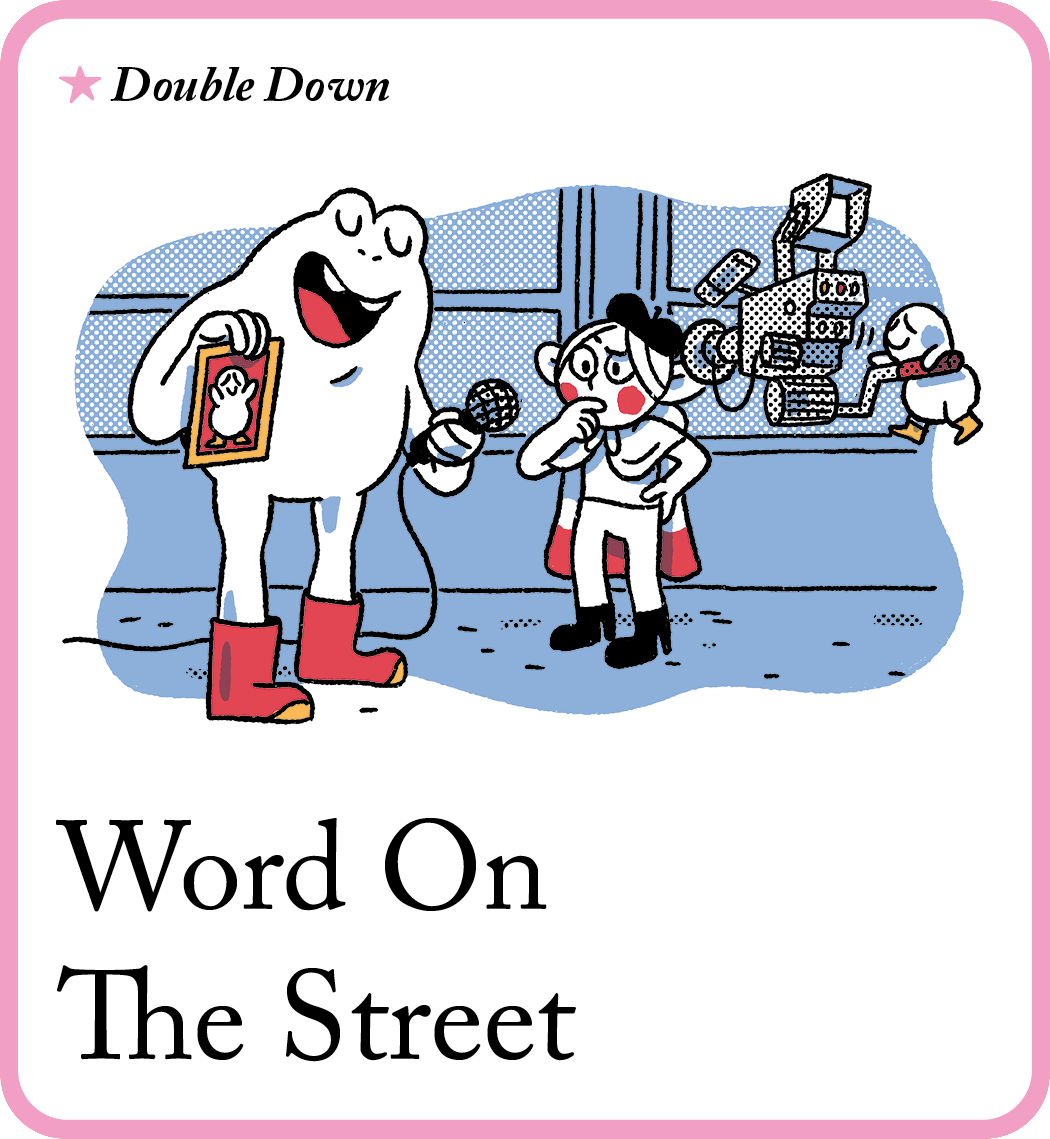
👥 Who is needed? Work alone or with a colleague, plus 15 people from outside the business
⏱️ How long is needed? About 10 hours
🧠 What’s the goal? Hold yourself to account by seeing if outsiders are able to intuitively understand your brand.
👀 Why is this important? The only proof that your strategy is working is that the outside world sees your brand the same way you do. After you’ve executed your strategy and unleashed your brand platform, use this card every year to measure how well your brand is understood.
💡 Tip: whomever is talking to the three groups of people, listed below, approach this process with an open mind and a willingness to accept constructive criticism.
Instructions
- Contact three different kinds of external observer:
– Five ‘friends’ of the brand: non-executive directors, family members, and close business associates who are familiar with the cafe’s vision and operations but can offer an external perspective.
– Five consumers of the brand: regular customers who enjoy the cafe’s offerings and are familiar with the brand through their frequent visits.
– Five non-consumers of the brand: individuals who are aware of Pip’s Cafe but have not yet visited or regularly chosen the cafe over competitors.
Tip: they must all be familiar with the brand, but do not allow them to study it in advance. - Ask each of the fifteen people the following questions:
“What do you understand this brand to be all about?”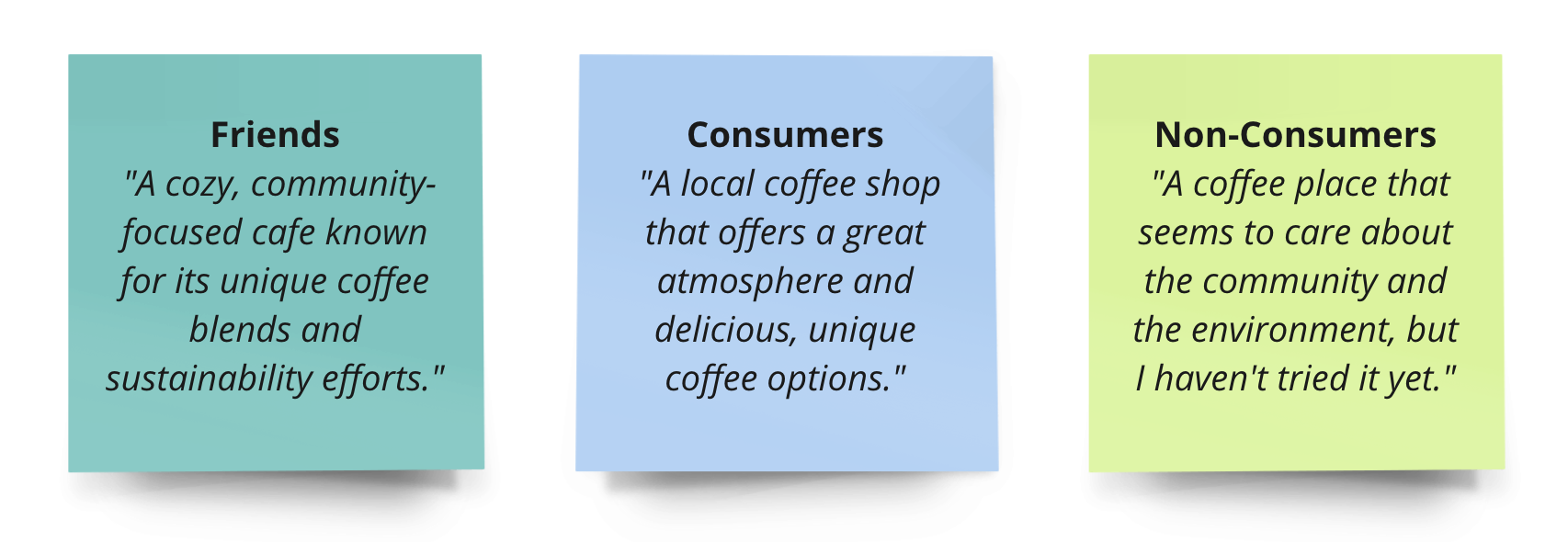
“What benefit do you think consumers get from this brand?”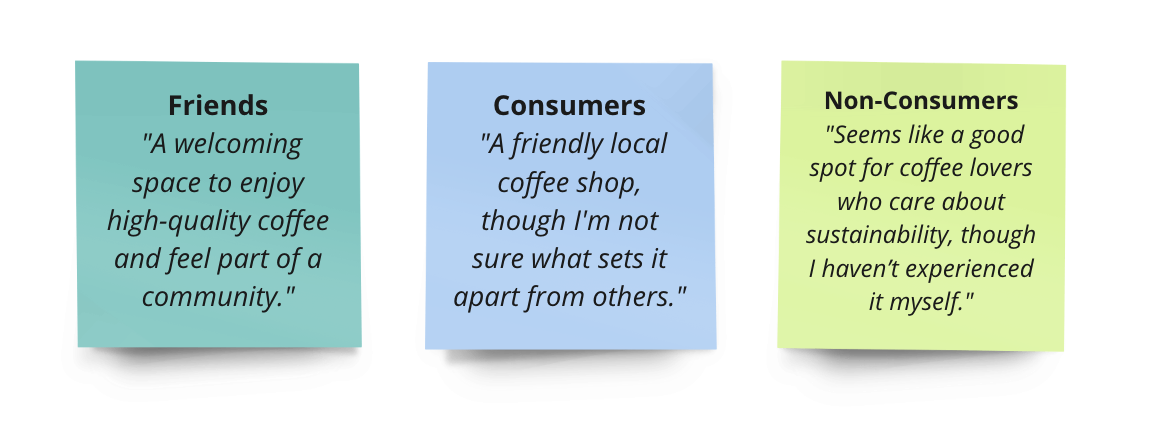
“What do you think makes this brand different from its competitors?”
- Label each response as either ‘aligned’ or ‘non-aligned’ with what you intend the answer to be. Give yourself 1 point for every friend who is aligned, 2 points for every consumer and 5 points for every non-consumer. Sum up your score and use it as your benchmark going forward.
– 0-5 No brand
– 6-15 Weak brand
– 16-30 Solid brand
– 30-40 Outstanding brand
Pip’s Cafe alignment scoring
⬇️ In the next tactic, take what you have learned about how aligned your brand is, and re-assess your brand strategy with Hamster Wheel.
2
Use Hamster Wheel to re-evaluate your strategy
Use Hamster Wheel to re-evaluate your strategy
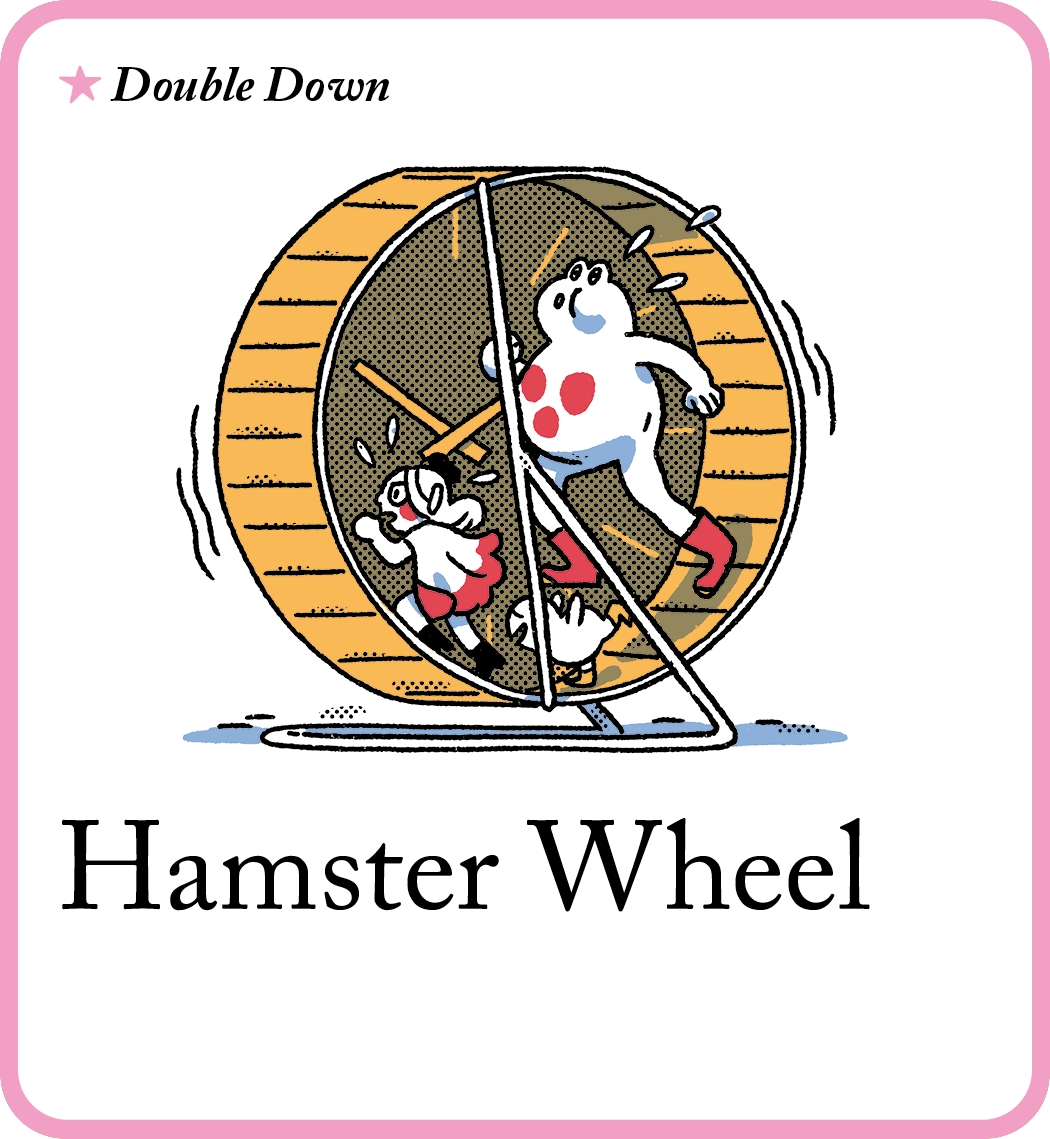
👥 Who is needed? Two research team members, plus the executive team
⏱️ How long is needed? About 1-2 days
🧠 What’s the goal? Protect your brand’s position by re-evaluating your strategy in a changing world.
👀 Why is this important? Your goal should be to occupy the same market space, the same brand territory, forever. To become synonymous with it. But culture and market conditions are always changing. What represented that space yesterday may not represent it tomorrow, so you need to review things constantly just to stay put.
💡 Tip: if you don’t have anyone on your team that is research focused, no worries, choose two people that are curious and detailed oriented to do the research below.
Instructions
-
In advance, ask two of your team to record any new trends/developments/news from the past year that are relevant to your value offering and brand platform. Each should choose a different focus:
Category: has anything changed or emerged in the category that shifts what it means to deliver our value offering? (E.g., if you are ‘healthy’, have standards of what that means moved?)
Example: The first Pip’s Cafe team member focuses on big trends affecting the coffee shop industry. They discovered a 15% year-on-year increase in demand for plant-based milks and vegan cakes.
Culture: have there been any big news stories/moments in the past year that pertain to our brand platform? (E.g., Nike adopted the social justice struggles of their athletes.)
Example: The second Pip’s Cafe team member focuses on cultural trends, such as the huge increase in demand for ‘instagrammable’ locations – that is, picture perfect coffee shops with beautiful plants and quirky signs.
-
Gather your executive team in an informal location. Ask your two researchers to present their findings.
-
As a group, discuss and label each topic the researchers raise in one of the following two ways:
Threat: a fundamental change of landscape that we must respond to in order not to lose ground.
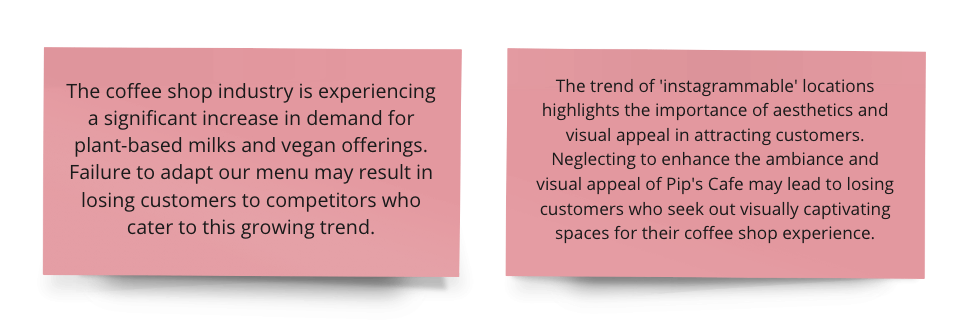
Opportunity: a new idea that’s taken hold that we can incorporate into our activities in order to stay current.

⬇️ In the next tactic, using what you have learned about the threats and opportunities, use Brand Led-Growth to explore the wider potential of your brand.
3
Use Brand-Led Growth to explore new potential products or services
Use Brand-Led Growth to explore new potential products or services
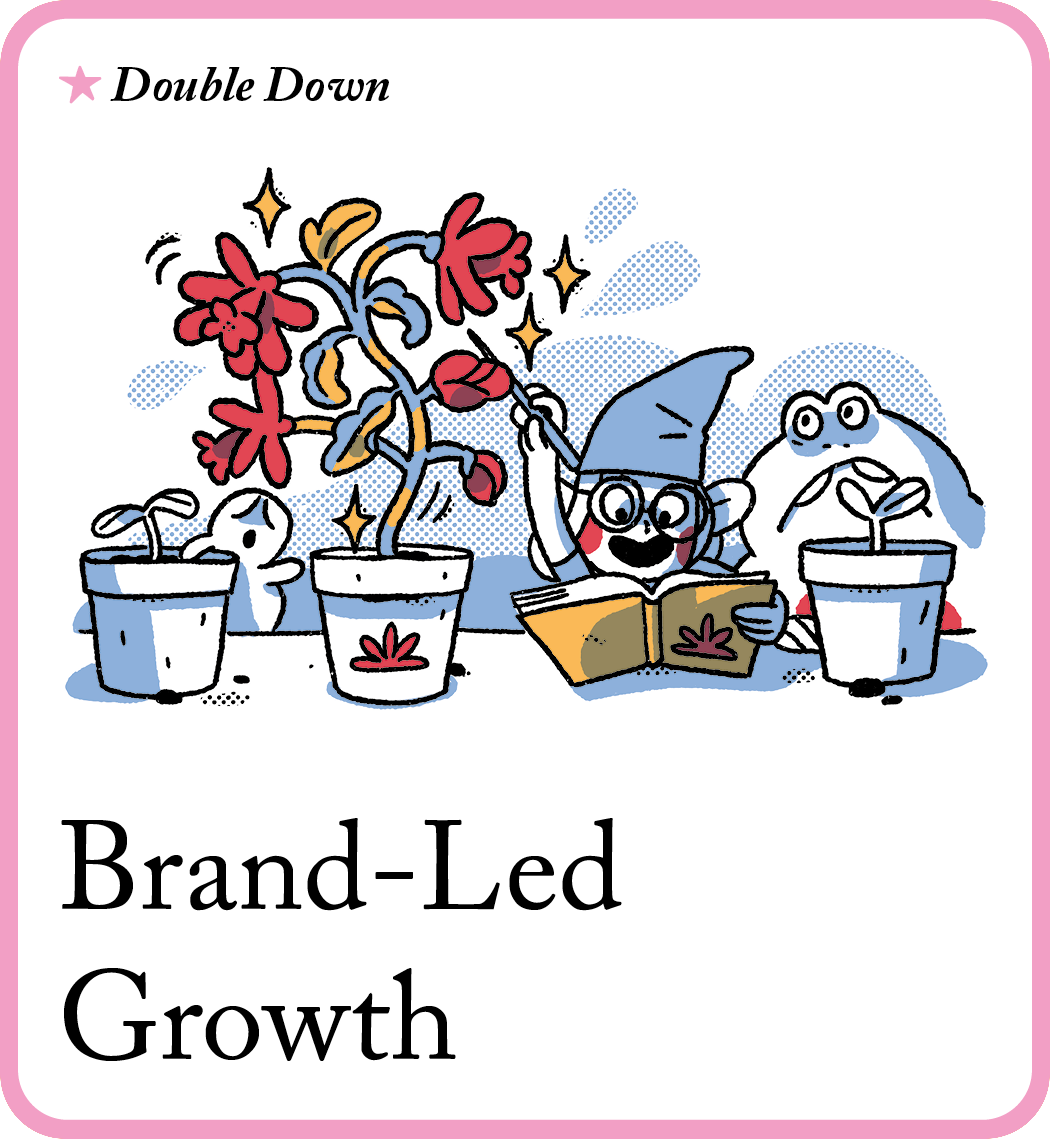
👥 Who is needed? 3-10 people
⏱️ How long is needed? About 2 hours
🧠 What’s the goal? Use your strategy to create new products that grow your brand – and your bottom line.
👀 Why is this important? The conventional way to develop new products is simply to match what your competitors are doing. They launch X, you launch X. They launch Y, you launch Y. A recipe, of course, for commodification. Move away from the crowd by letting your brand lead, not your competitors.
💡 Tip: a unique value proposition (UVP) is the core benefit or solution that differentiates your product or service from the competition and positions it as the best possible option on the market.
Instructions
-
Gather 3-10 people. Write your value offering on a board, with an arrow leading from it to your product, like so:
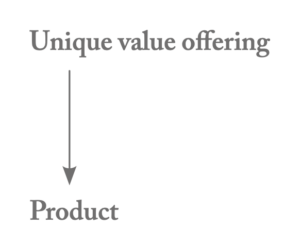
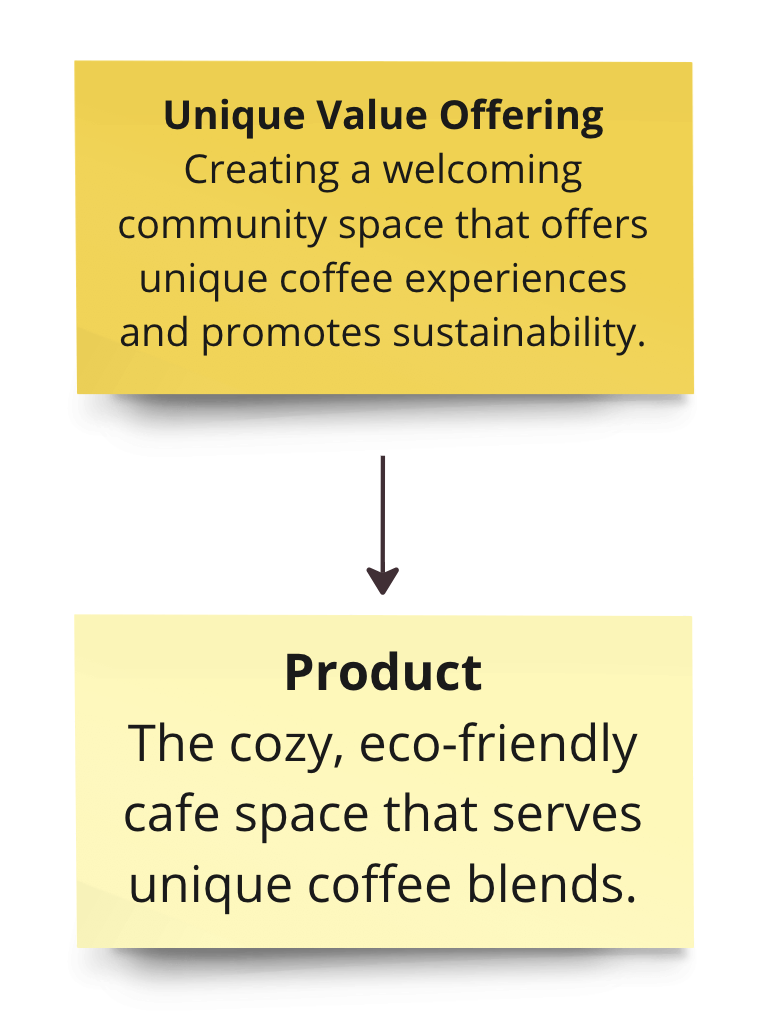
-
Explain to the group that your product is nothing more than a tool to deliver this value to people. Now draw some additional lines, like this:
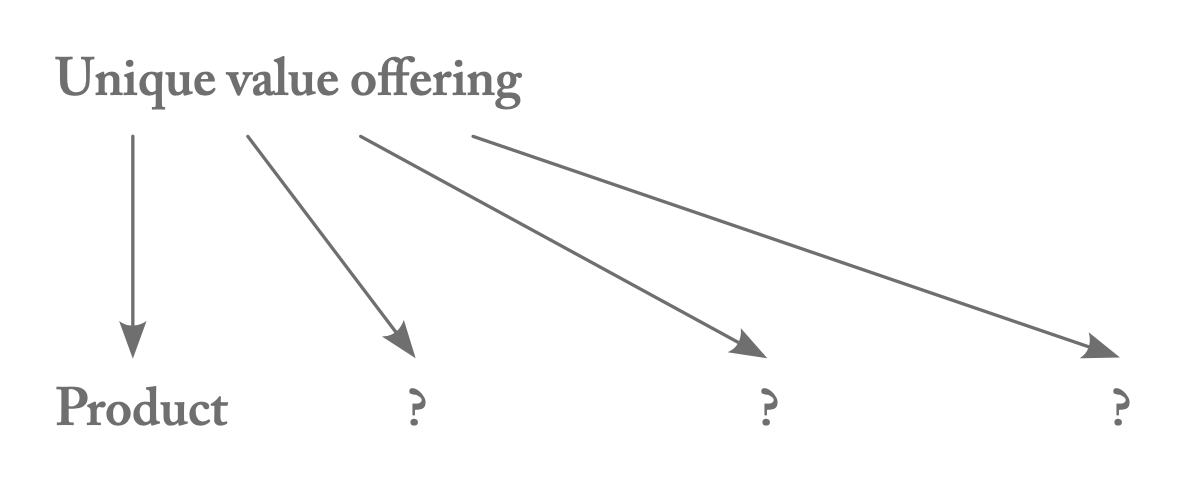
-
The question marks represent potential future products. Challenge the group to forget your core product – to even forget what category you are in – and ask them: “What other things might deliver this value?”.
This forces people to think ‘value first’ rather than product first and generates unpredictable product ideas that will increase both the focus and uniqueness of your business.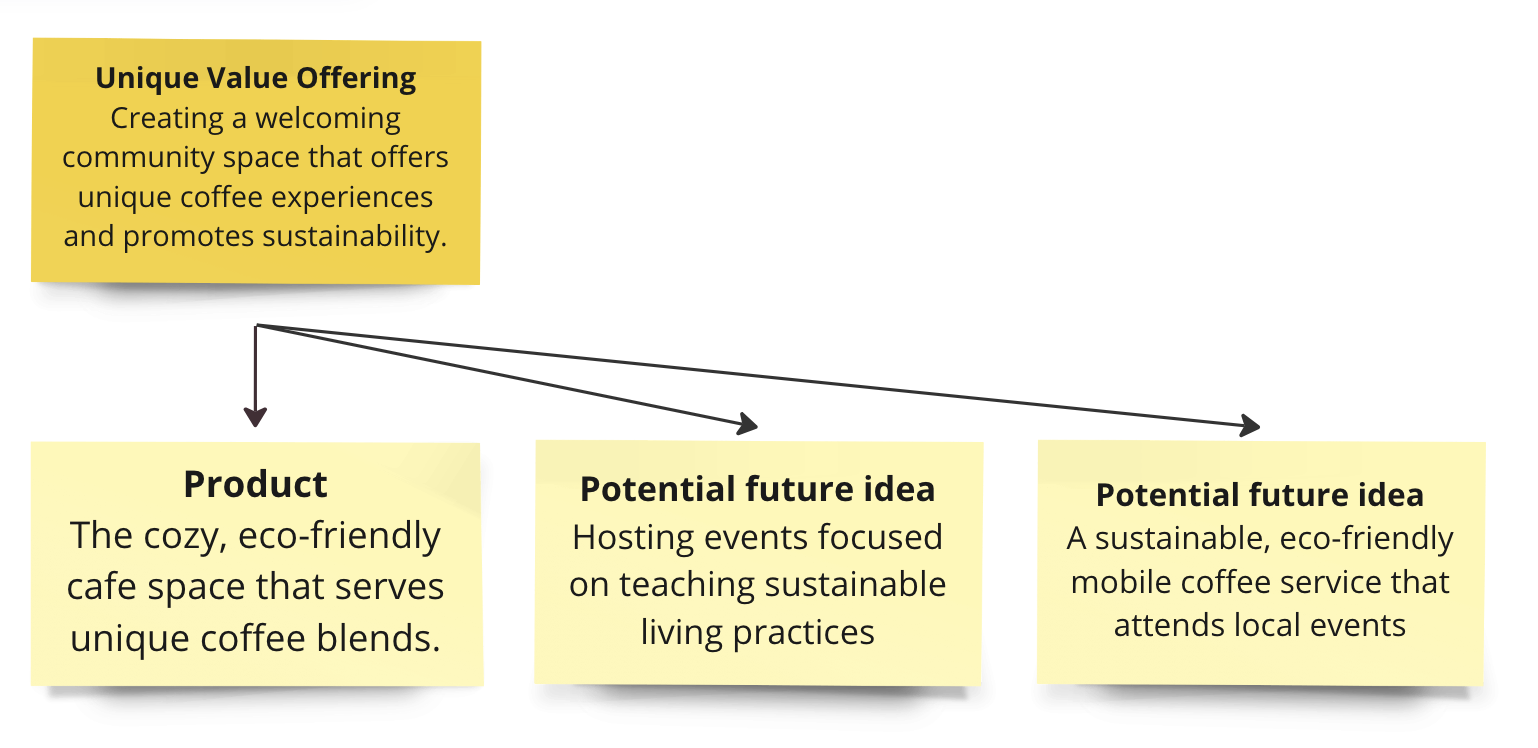
⭐️ Now you have finished all three tactics, it is time to consider pursuing one or more of these ideas.
What ways can I use this recipe?
- The complete loop: this means short, separate sessions for each of the three tactics sequentially over an extended period of days, or even weeks.
- All-in-one-go experience: Spend a few days diving deep and use all three tactics, with lots of breaks in-between.
Some tips
- Don’t lose sight of the goal. What we’re trying to do here is build a business that 1) gives people something they want, and 2) gives them something they can’t get anywhere else. So long as you keep that top of mind you’ll move much quicker.
- Let things be a bit random. Don’t feel the need to be overly linear – the big breakthrough could come from any card at any moment.
- If in doubt, write. Write your current thinking in an email, to yourself, to a colleague, to a pal, whoever. It will really help to tidy your thinking and give you extra clarity.
What next?
Congratulations! You have completed a round of How to keep you brand fresh ! You have discovered how your brand is understood by your wider audience, re-evaluated your strategy, and explored the wider potential of your brand. It is now time to put what you learned into action!

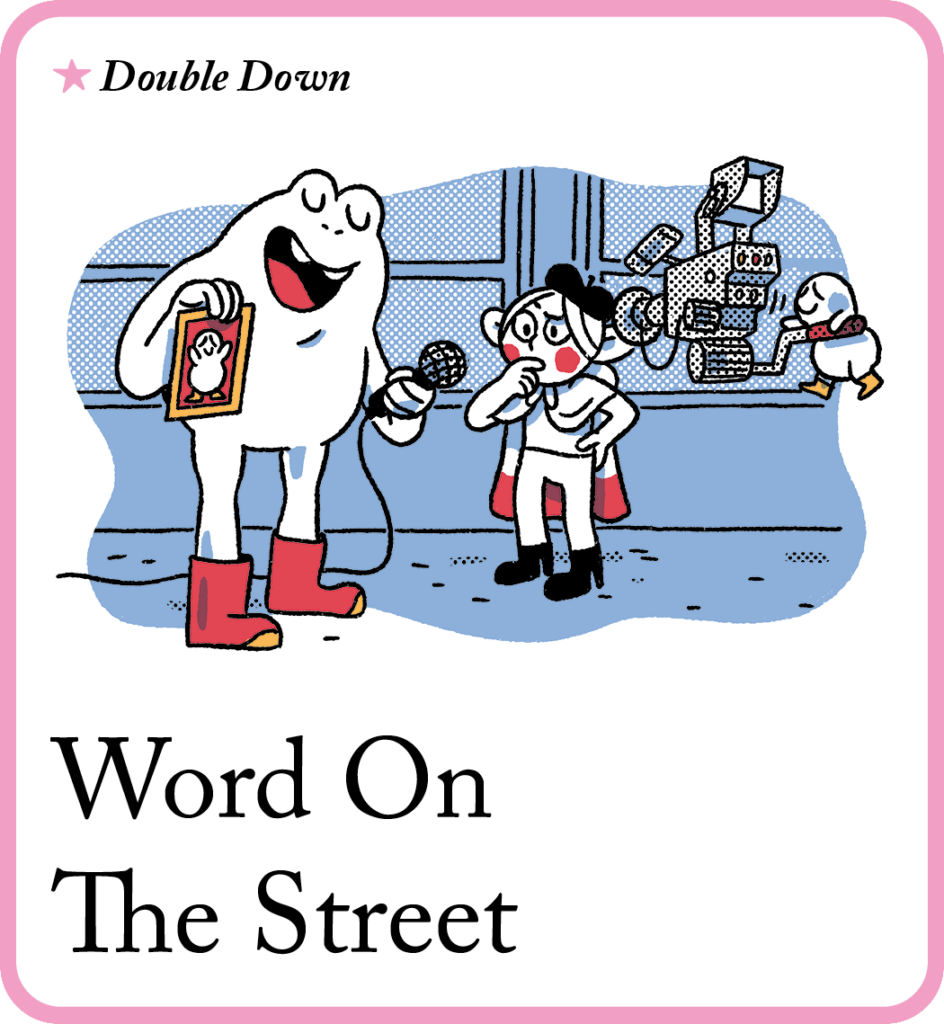
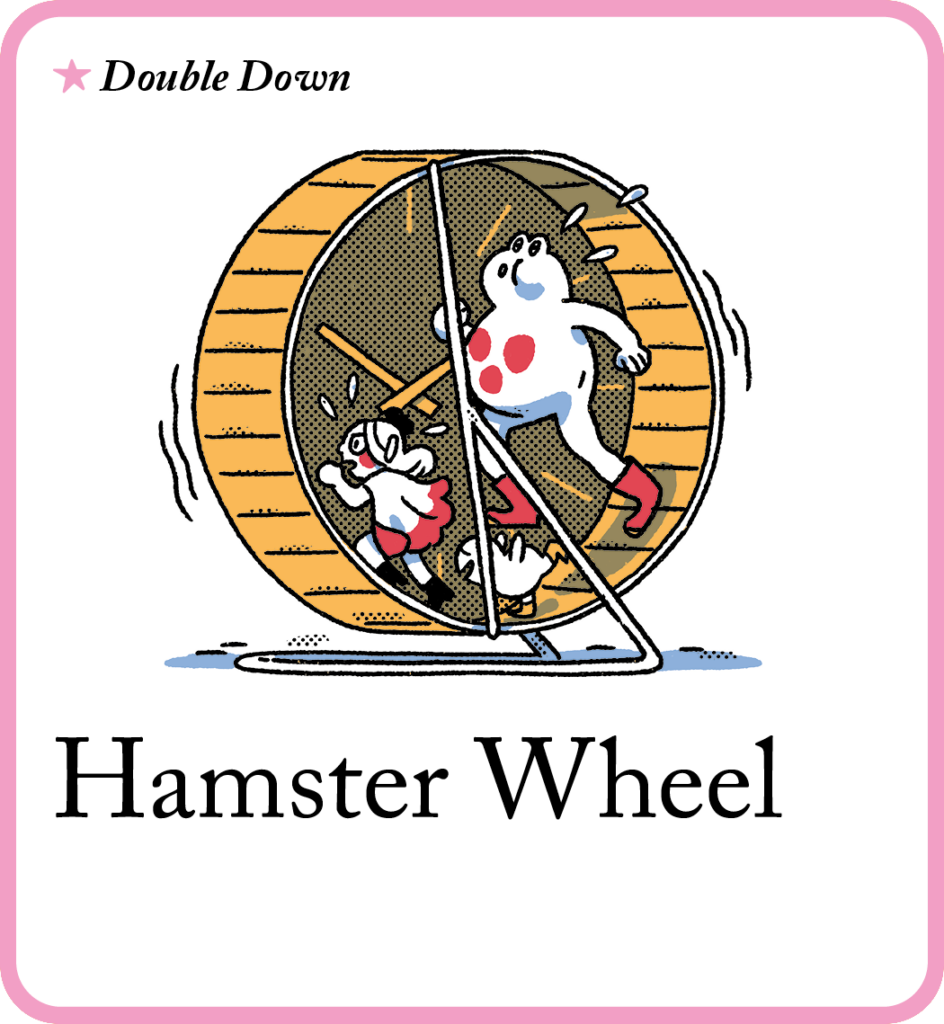
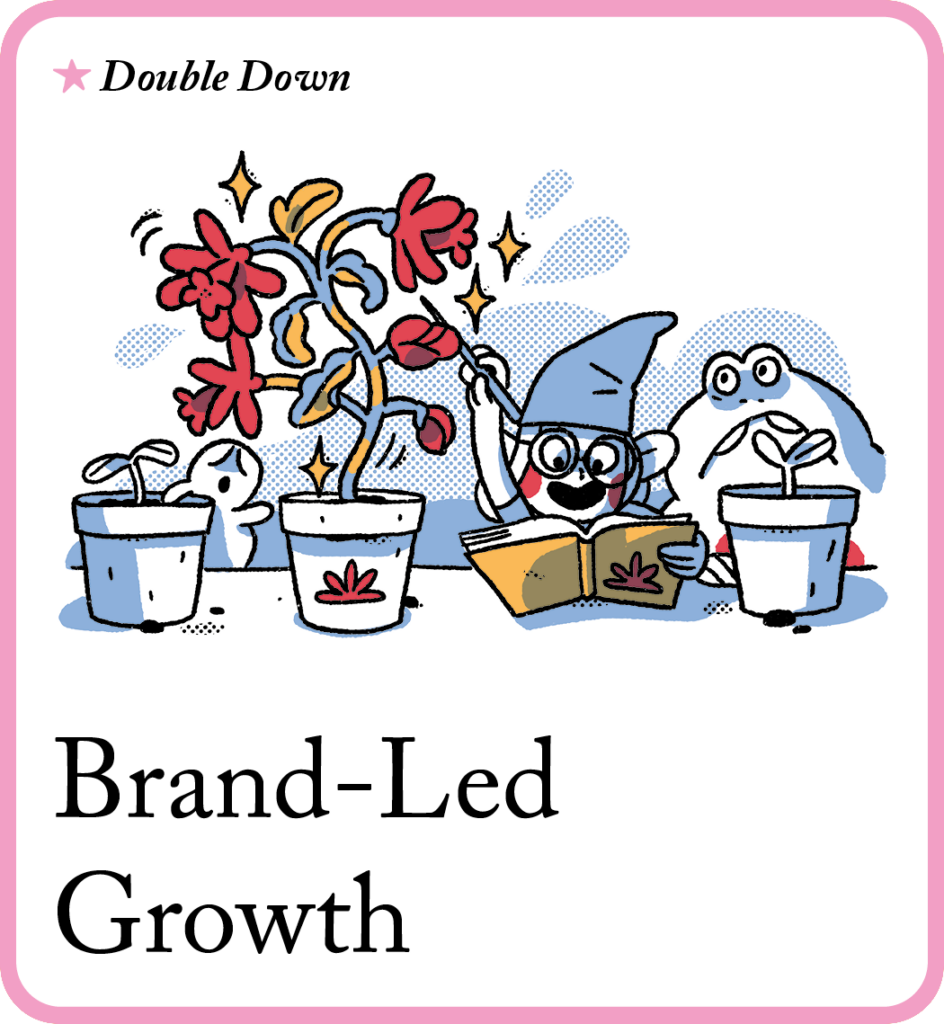

If you leave us your email, we'll let you know if we update this guide based on your feedback.